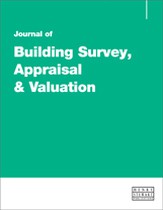Dilapidations: Identifying the boundaries of liability
Abstract
This paper considers the problem of identifying reliable information in the interpretation of the content of the lease as well as the valuation. A surveyor would hope to be able to give reliable guidance to their client but decisions at first instance have been unpredictable. The common law guidance is volatile, with even decisions of the Court of Appeal being reversed by the Supreme Court.1 The expected standard of repair is set out in the contract. Instances where this has been changed, adjusted or clarified in litigation are identified. The issues raised by improvements that are accepted as part of a repair are discussed, as well as those occasions where this has resulted in the proposed remedy not being the liability of the tenant. The varied approach to calculation of the diminution in value has often been ‘judge-led’ rather than valuer-driven. This has resulted in a variety of outcomes that have not always been predictable. The content of this paper deals with the position in England and Wales (save for the Building Regulations reference as Wales has its own Building Regulations). Scotland does not have the Landlord and Tenant Act 1927 and there are also many other differences compared to English law. For that reason this paper does not refer to the position in Scotland. The boundaries of liability are important to establish but difficult to achieve.
The full article is available to subscribers to the journal.
Author's Biography
Malcolm Hollis has been active in private practice while maintaining his personal interest in research and education. In 1991 he set up Malcolm Hollis Chartered Surveyors (now Hollis). Malcolm has been a Chartered Surveyor for nearly 50 years and has been a partner or director of professional surveying practices for more than 35 years. Malcolm has inspected an eclectic range of buildings, including a cathedral, royal palaces, military domes and a nuclear reactor as well as a wide range of commercial and residential property. He has dealt with the settlement of over £80m of dilapidation claims. He has been professor of building pathology at the University of Reading (now Henley) since 1988 and been an external examiner to universities in the UK, Italy, Hong Kong and Malaya. Malcolm has written 10 books including Surveying Buildings, Surveying for Dilapidations and Pocket Surveying Buildings and produced research and conference papers on matters including surveying, valuation, flooding, fire, and building failure and collapse. He sits on a wide range of editorial boards. Malcolm was a member of the Building Surveyors’ Divisional Council and has been a member of many working parties within the RICS, including those for surveys, valuations, commercial property and conduct. He was a member of the President’s Commission to China and was a member of the working parties that produced the RICS Guidance Notes on Residential Surveys and a member of the Executive Committee and member of Council of the Academy of Experts 2004–11. He was on the validation board for the RIBA. He has given evidence in over 60 matters within Chancery, the High Court, Technology and Construction Court, Crown Courts, County Courts and Magistrates’ Courts in both civil and criminal actions in England, Scotland, Wales, Guernsey, Holland and Belgium.
Citation
Hollis, Malcolm (2020, March 1). Dilapidations: Identifying the boundaries of liability. In the Journal of Building Survey, Appraisal & Valuation, Volume 8, Issue 4. https://doi.org/10.69554/IKYL3837.Publications LLP
